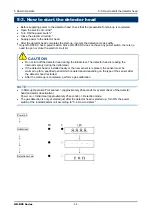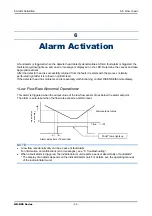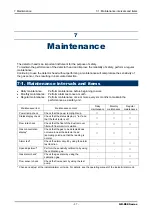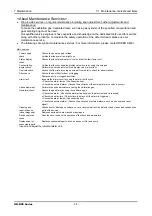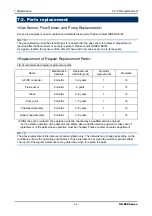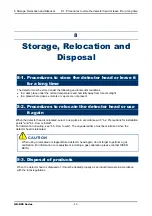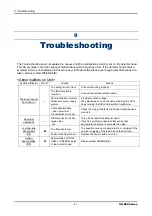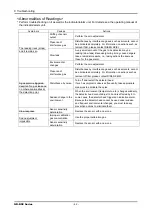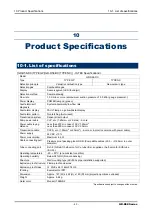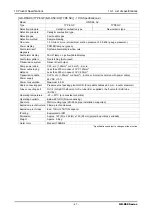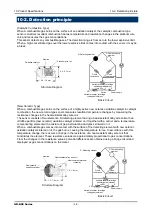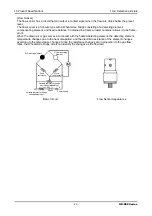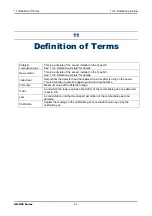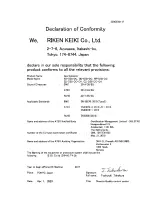
10 Product Specifications
10-2. Detection principle
GD-D58 Series
- 48 -
10-2. Detection principle
[Catalytic Combustion Type]
When a combustible gas burns on the surface of an oxidation catalyst, the catalytic combustion type
sensor considers resultant combustion heat as temperature and resistance changes in the platinum wire
coil, and measures their gas concentrations.
This sensor detects any combustible gases. The detection range is from zero to the lower explosive limit.
When a high-concentrated gas over the lower explosive limit comes into contact with the sensor, it may be
a break.
[New Ceramic Type]
When a combustible gas burns on the surface of a highly active new ceramic oxidation catalyst in catalytic
combustion, the new ceramic-type sensor measures resultant temperature changes by measuring the
resistance changes in the heat-resistant alloy wire coil.
The sensor consists of two elements: A detecting element having a heat-resistant alloy wire coil with an
ultrafine particle (new ceramic) oxidation catalyst sintered on it together with a carrier and a temperature-
compensating element with a mixture of gas-inert alumina and glass sintered on it.
When a combustible gas comes into contact with the surface of the detecting element with new ceramic
oxidation catalyst sintered on it, the gas burns, causing the temperature to rise. In accordance with this
temperature change, there occurs a change in the resistance of a heat-resistant alloy wire coil that
constitutes the element. These resistance values are approximately proportional to gas concentrations.
From the changes in the resistance values, potential differences are obtained using a bridge circuit and
displayed as gas concentrations on the meter.
Alumina
Oxidation catalyst
Platinum wire coil
0.5 - 0.7 mm
0.8 - 1.0 mm
Structure Diagram
D: Detecting element
C: Compensating
element
Fixed
resistance
Fixed
resistance
Variable resistor for bridge
equilibrium adjustment
Variable resistor for bridge
voltage adjustment
Switch
Power supply
Basic Circuit
VR
SW E
Alumina
New ceramic
oxidation catalyst
Heat-resistant alloy wire coil
1.4 - 1.6 mm
1.3 - 1.8 mm
Structure Diagram
D: Detecting element
C: Compensating
element
Fixed
resistance
Fixed
resistance
Variable resistor for bridge
equilibrium adjustment
Variable resistor for bridge
voltage adjustment
Switch Power supply
Basic Circuit
VR
SW
E
Heat-resistant material
(ceramic)

